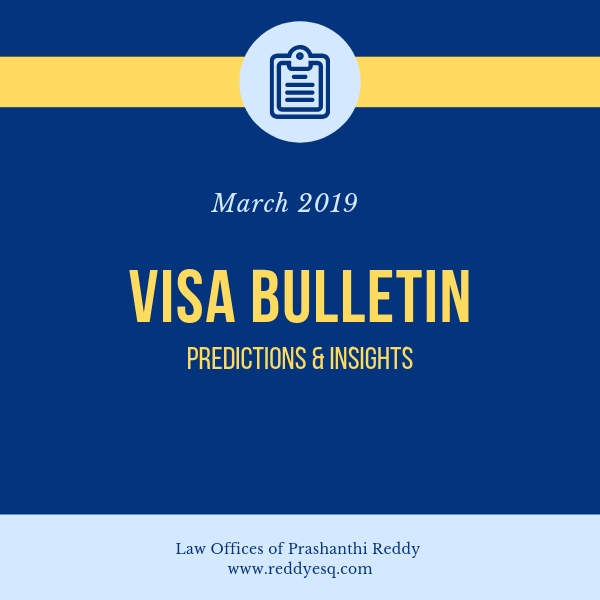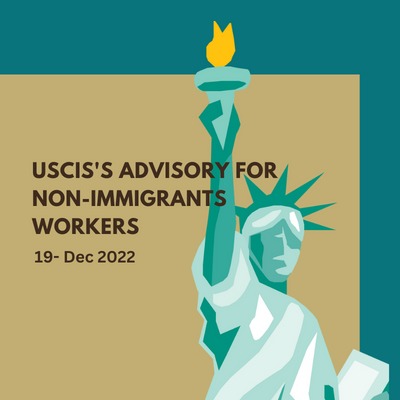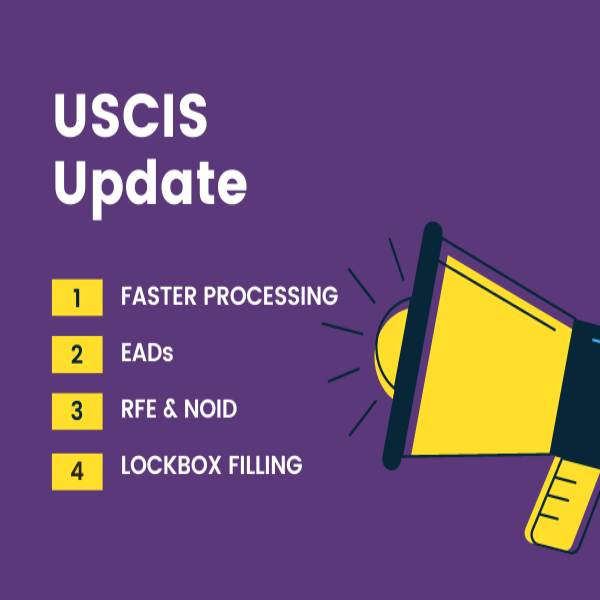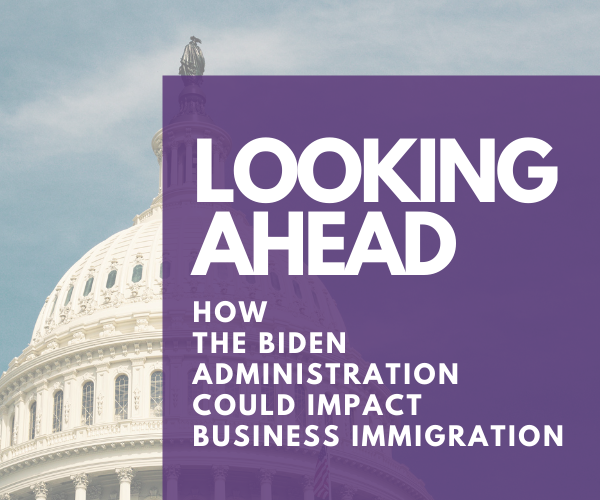For the March 2019 Visa Bulletin, DOS’s Charles Oppenheim who is the Chief of the Visa Control & Reporting Division provided forecasts and insights on the movement of final action dates for the March 2019 Visa Bulletin. These predictions and analysis will help keep prospective immigrant visa applicants up to date.
Employment-Based Preference Petitions
EB-1 – In this category, Charles Oppenheim predicts little to no movement over the upcoming months. Movement for EB-1 India and EB-1 China is expected to be null or at most by 1 month, while for the rest of the world movements are expected to be between zero and 2 months. This slow movement is due to the increased demand as the result of projections published in the February 2019 visa bulletin in January. (There was a 50 % increase in January as a result of the release of the February bulletin).
Apart from EB-1 India and China, final action dates of all countries moved by a month to January 1, 2018. For India and China, the EB-1 final action dates advances by two weeks to February 22, 2017
China’s EB-2 & EB-3 Movements – Since EB-3 China fell behind EB-2 China in December last year, EB-2 China has been ahead and is advancing more quickly. This is expected not to change anytime soon.
EB-2 China final action date advances by 3 months to January 1, 2016, while EB-3 China moves to July 8, 2015, a movement of a week.
India’s EB-2 & EB-3 Movements – EB-2 India still remains behind EB-3 India. Not only that, EB-3 India also surged further ahead of EB-2 India. It is likely that this trend will be reversing in the foreseeable future, as an increase in EB-2 downgrades will cause an increased demand in EB-3 India.
For India, the final action date for the EB-2 category continues to crawl, moving by just 3 days to April 9, 2018. On the other hand, EB-3 Final action date for India advances by a month to May 22, 2009.
EB-3 Philippines & Other Workers Philippines – Although, limited movement was predicted in the previous check-ins, the EB-3 Philippines surges forward by 4 months to December 1, 2017. This is because demand is still below the Philippines’ per-country limit. According to Charles Oppenheim, while advancing the final action date excessively may cause a retrogression in the future, the USCIS has no choice but to advance the date as far as demand is below the country’s limit.
EB-4 – Mexico’s final action date is January 1, 2018, a movement of 4 months. For Honduras, Guatemala, and El Salvador, the final action date will continue to be March 1, 2016. For all other countries, the EB-4 dates are current.
EB-5 (Regional Center and Non-Regional Center) – For the non-regional center (C5 and T5) program, China’s date moved by a week to September 8, 2014. For Vietnam, the new final action date is July 15, 2016, a movement of one month. The date continues to be current for the rest of the world.
Family-Based Preference Categories
FB-3- For Mexico, the final action date is January 15, 1996, a movement of three weeks after remaining stagnant for months. This is due to a fall in the amount of petitions being processed at Ciudad Juarez. Charles Oppenheim noted that demand could rise while awaiting final action at USCIS.
The Philippines’ FB-3 & FB-4- Final action date for the FB-4 category moves by 3 months while the final action date for the FB-3 category moves by 4 months. This means that, For the Philippines, the final action date for FB-3 and FB-4 are the same – January 1, 1996.
Sources
AILA. (February 217, 2019). Check-in with DOS’s Charlie Oppenheim – AILA Doc. No. 14071499.






